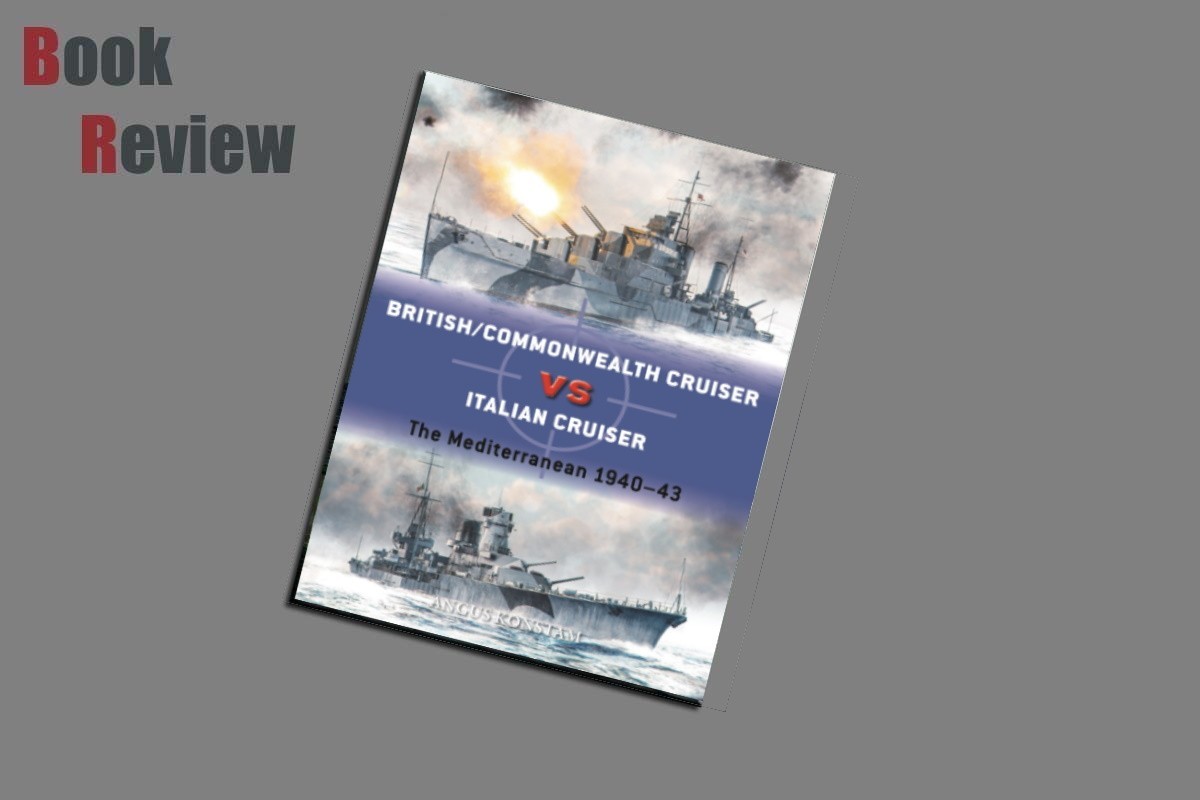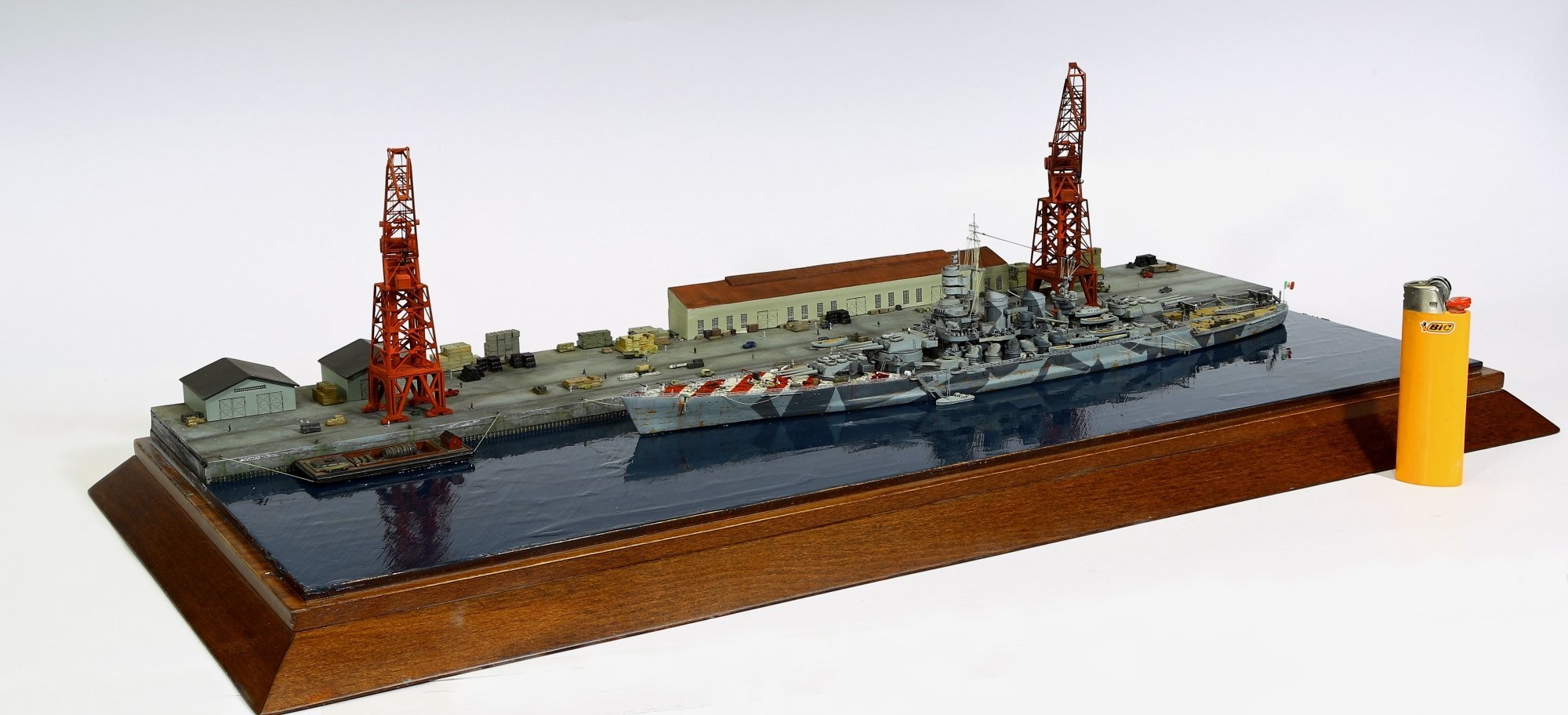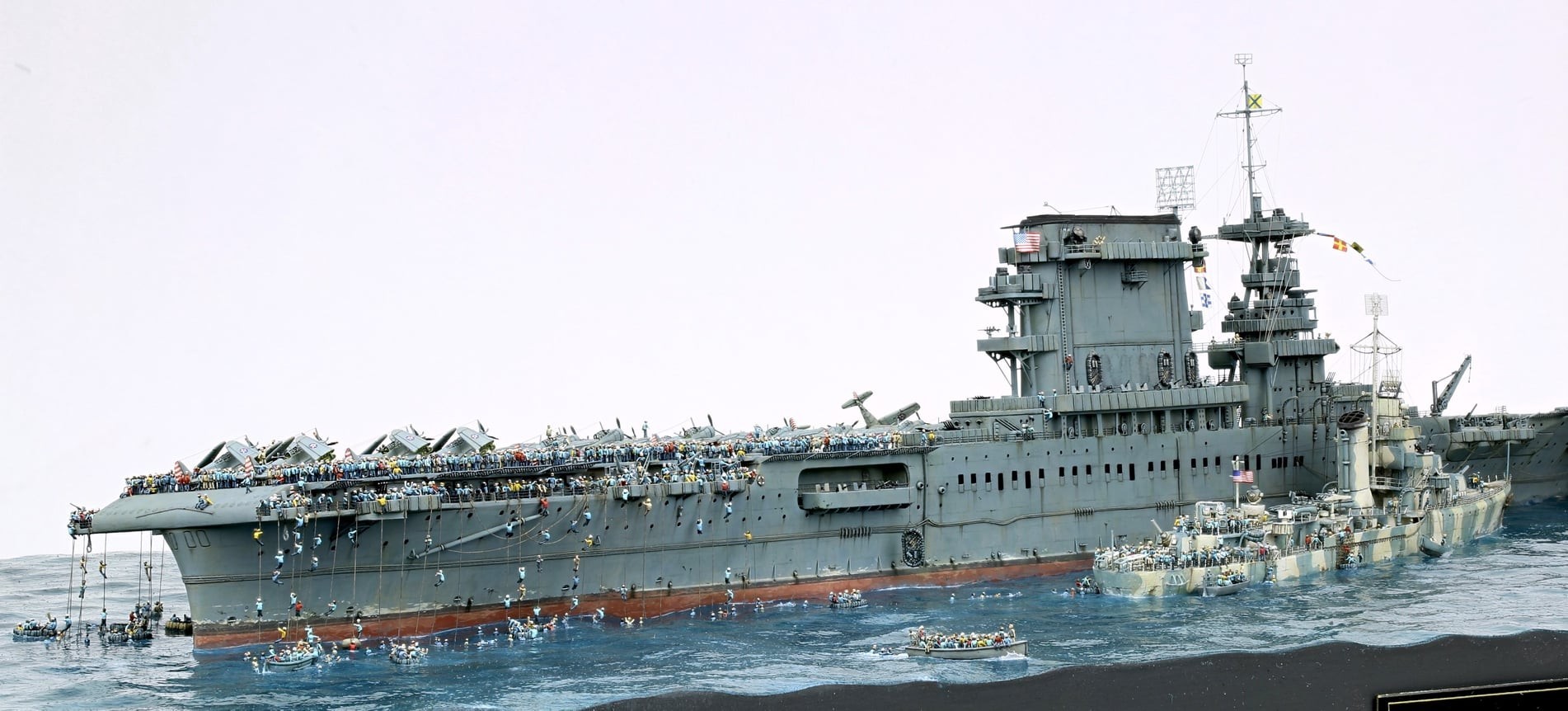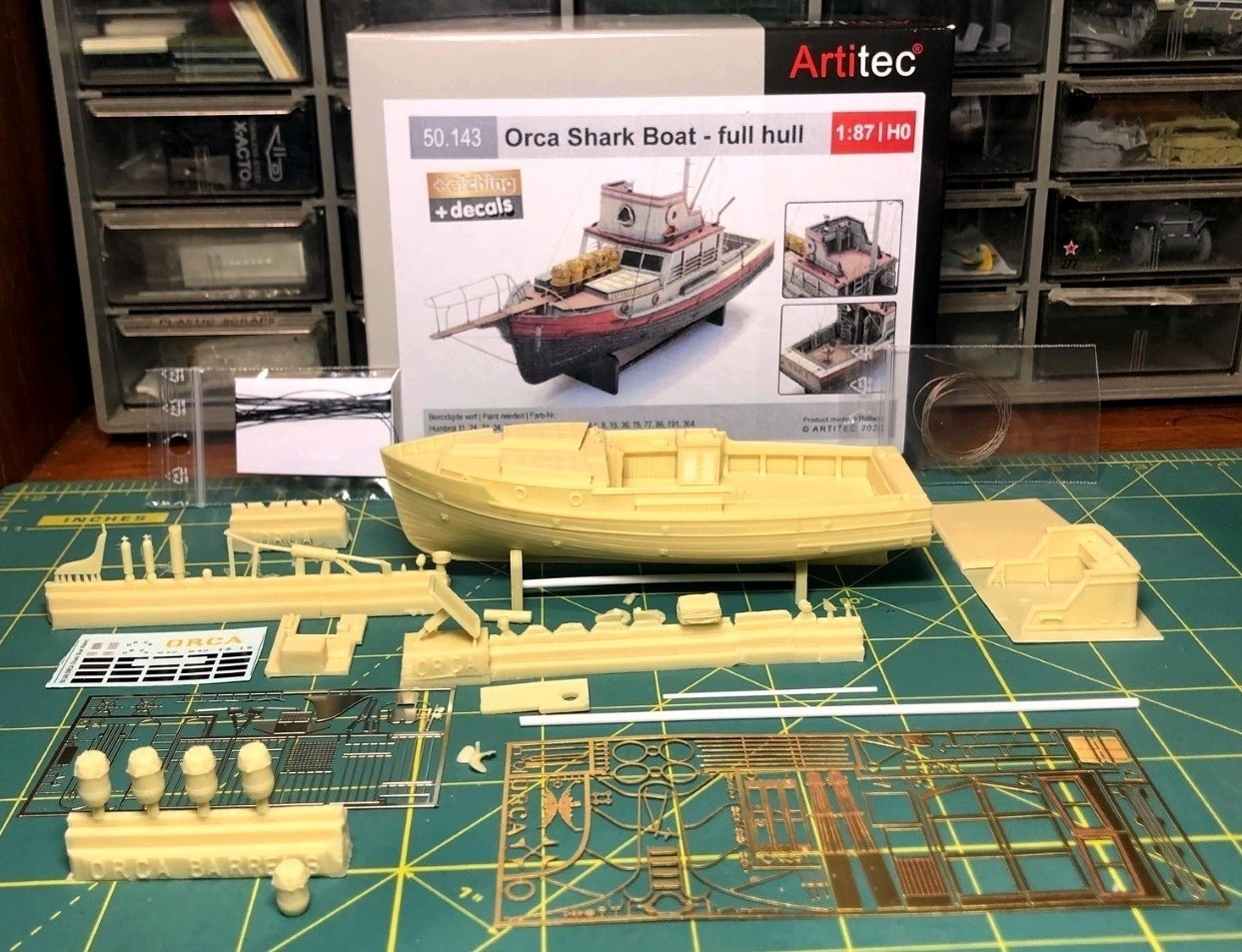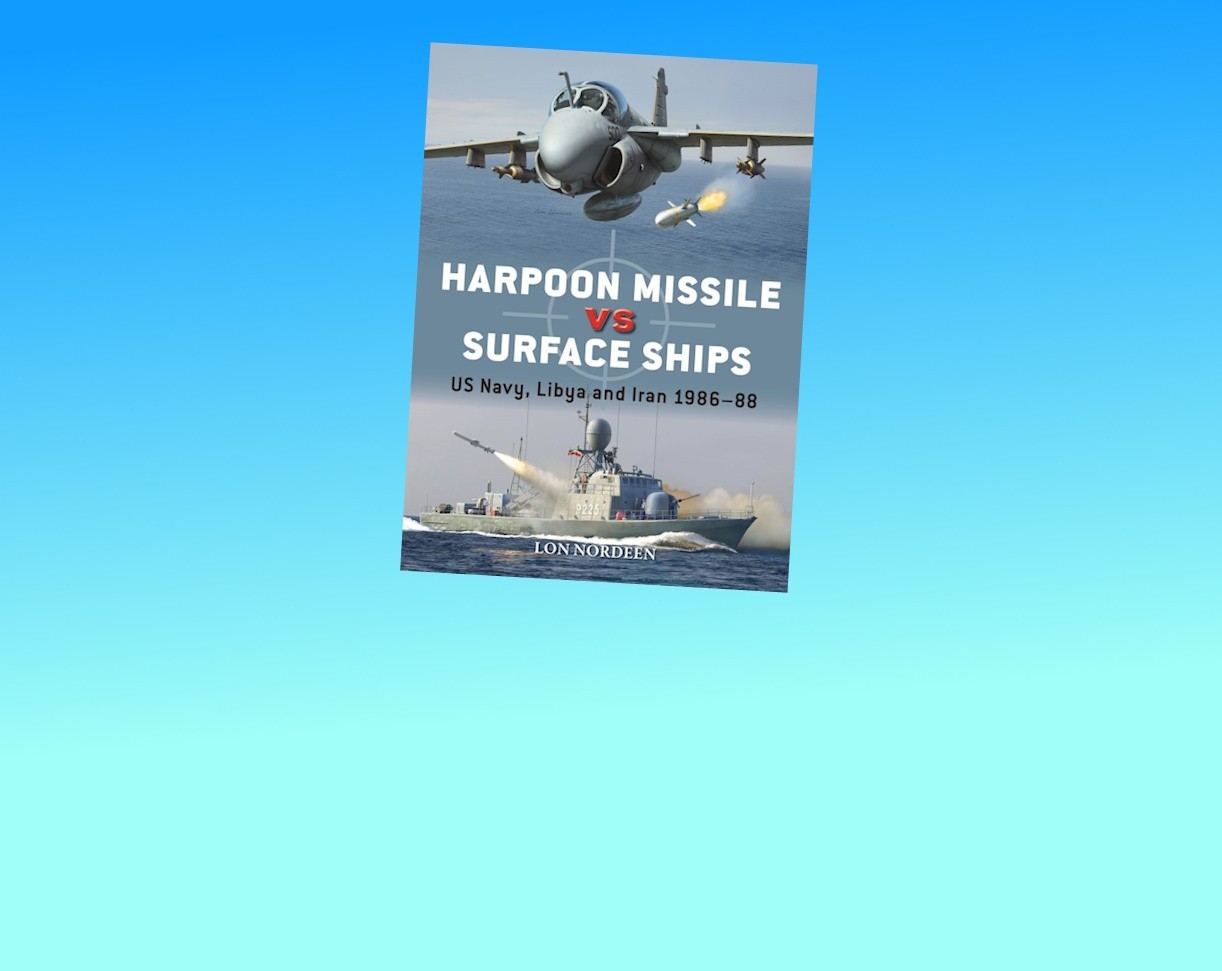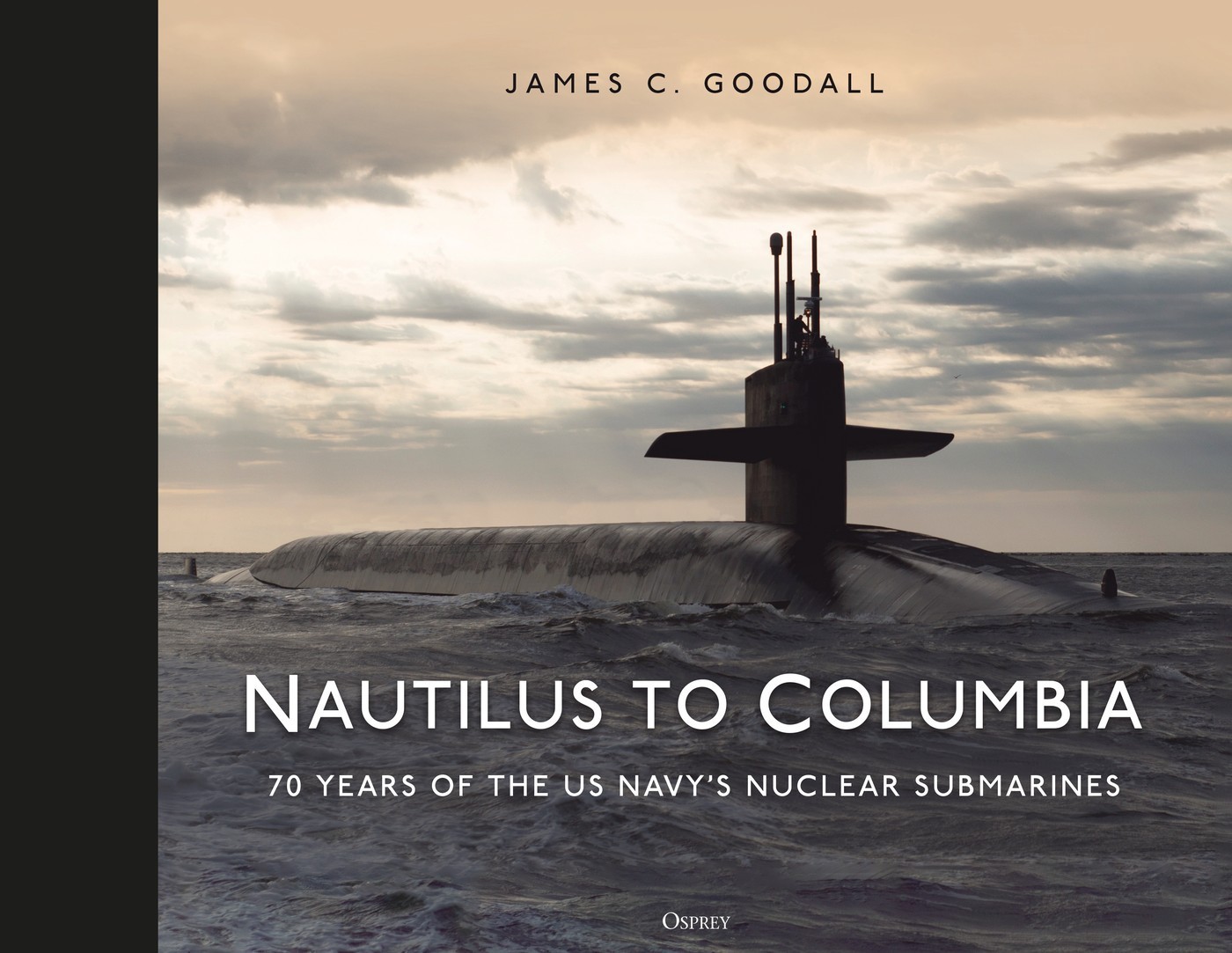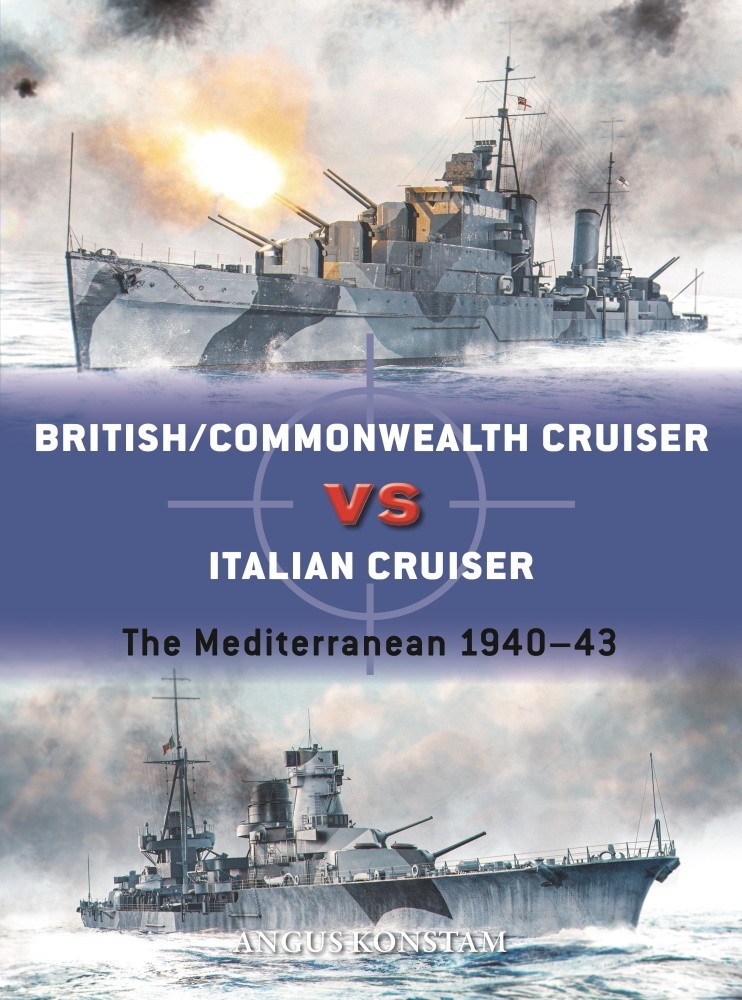
Introduction
Soon to be released by Osprey Publishing is Duel123, British/Commonwealth Cruiser vs Italian Cruiser The Mediterranean 1940-43. Authored by Angus Konstam and illustrated by artist Ian Palmer, this 80-page paperback presents the story of Italian and United Kingdom cruisers at war in the Mediterranean in World War II. The book is catalogued as ISBN 9781472849687 and with Osprey’s short code DUE 123. You can view it at Osprey's site here.
The naval war in the Mediterranean Sea has always been mysterious to me. It saw the range of combat from fleet actions with battleships, motor torpedo boat clashes, and special forces frogmen attacking ships with human-guided torpedoes and hand-placed mines. Decades ago, I even read an account of Royal Navy sailors pursuing a damaged Italian ship at night, boarding it, capturing it, and scuttling it. Italy’s navy, the Regia Marina (RM), was a serious contender in terms of number of ships and technologies. Despite that, legend has it the RM did not fare well against the RN (Royal Navy). Eagerly did I crack the covers of this book to read “why?”
Osprey tells us;
In 1940, when Italy entered World War II, the Royal Navy was badly overstretched, and its Mediterranean Fleet had to face both the Italian Navy and the German and Italian Air Forces in a battle for supremacy. Although the British and Italian battle fleets squared off against each other, they were both often held in reserve, in case the enemy fleet put to sea. So, it was left to the cruisers to wage their own naval war in the Mediterranean. This involved a range of missions, from escorting convoys and hunting enemy ones, to fighting for control of the sea around key locations such as the waters off Malta and Crete.
The Mediterranean Sea experienced intensive naval combat while Italy was in the war, even without American or German participation. Cruisers played an important role. The book explores their naval engagements at: Cape Spada in 1940; First and Second Gulf of; convoy battles in 1941-42; Battle of Pantelleria in 1942. Let’s take look at that cruiser war.
Contents
British/Commonwealth Cruiser vs Italian Cruiser is told through the standard Duel format of 11 chapters and sub-section in 80 pages:
1. Introduction
2. Chronology
3. Design and Development
4. Technical Specifications
5. The Combatants
6. The Strategic Situation
7. Combat
8. Analysis
9. Aftermath
10. Bibliography
11. Index
I found the text easy to follow and smartly arranged. The author provides overviews of interwar naval treaties and their design influences, whether a heavy cruiser (CA) or light cruiser (CL) was favored. It recounts the purpose of a CL compared to a CA, and how the RM was influenced by French interwar naval developments.
Following the four stage setting pages of Introduction and Chronology we develop our understanding of the raison d'être for the ships and guns in Design and Development and Technical Specifications. As form follows function I was amazed by the development and construction of some items, and the manner in which the warships were envisioned for use. The chapters are organized into sub-chapters each for the British and Italians: The Cruiser Fleet; The Heavy Cruisers; The Light Cruisers; The AA Cruisers (British only); A Comparison of Design and Function. An assessment of each design and their roles/functions are reviewed. Some classes were a single ship. Each ship class is accompanied with a table presenting important metrics, which relisted in Tables, below.
Those pages spotlight each class of ship with photos and informational tables. When designs were laid down and when service began are recounted, as are modifications and variations. The author presents strengths and weaknesses of the opponents’ components, the fine balance between speed, protection and firepower in ship design is equally discussed, as well as which navy favored which blend of attributes. Each side had some technical advantages and they are reviewed: gunnery direction; firepower; protection. Unique camouflage is identified and mentioned.
The Combatants looks at the quality and composition of each navy’s crews including the social-educational aspects. Two commanders are profiled: Admiral Andrew Browne Cunningham; Ammiraglio Di Squadra Angelo Iachino. Further, deployments and cruises of each cruiser of the RM and RN is documented.
The Strategic Situation sets the backstory for these warships. Often, this part of these books is not very interesting to me but this time it is – very informative both tactically and strategically.
Sixty-three pages later we enter Combat. This chapter is not a comprehensive day-by-day account of all Mediterranean naval clashes of 1940-43 but rather a representational sampling. Sub-chapters include:
· Sweeps and Convoy Attacks
· Cape Spada in Crete
· Cape Matapan
· First Battle of Sirte
· Second Battle of Sirte
Analysis and Aftermath distills what we just read into lessons learned and commentary. I found a couple of the conclusions upset the conventional wisdom of the war between the Regia Marina and Royal Navy as I previously understood it. This book was very interesting to read.
Photographs, Artwork, Graphics
Few pages lack graphics. The gallery of photographs enhances and support the text. There are a few that may inspire modelers to create a diorama, and many photos that will help modelers refine their modeling subject. Each cruiser class is represented by at least one photo of one of the ships. Several in-action combat photos are included, too. The quality of the images ranges from professional exposures to amateur ‘grab shots’. Several look to be stills from motion picture film. Also in the book are reproductions of paintings of some cruiser battles and a cut-away. I do not consider them as artwork as listed below.
Artwork provides views of what the cameras missed. Artist Ian Palmer created specially commissioned color artworks of ships and particular systems.
HMAS Sydney, July 194 [sic]: oblique view from port bow and an oblique profile of the starboard side. Lengthy caption describes the ship and recounts her combat history.
HMS Naiad, May 1941: oblique view from port bow and an oblique profile of the starboard side. Lengthy caption describes the ship and recounts her combat history.
RM Trento, March 1942: oblique view from starboard bow and an oblique profile of the port side. Lengthy caption describes the ship and recounts her combat history.
RM Raimondo Montecuccoli, June 1942: oblique view from starboard bow and an oblique profile of the port side. Lengthy caption describes the ship and recounts her combat history.
British Light Cruiser Gun Turret: cut-away of triple 6in/50 BL gun Mark XXIII turret with descriptive caption.
Italian Light Cruiser Gun Turret: cut-away of Condottiere-type twin Model 26v 15.2cm/52 guns. Descriptive caption.
Combat scene The Battle of Pantelleria, 15 June 1942: two-page depiction of RM cruiser broadsides against HMS Cairo.
Fire Control System, British Light Cruiser, 1941-42: narrated schematic showing the interface of radars; Fire Control Table; turrets; Director Control Tower; rangefinders; Radar office; Commanding Officer.
Map: The convoy battles keyed to eight actions.
Map: The Mediterranean Theater, 1940-43. Showing bases and sea routes for the RM and RN.
Tables
Nine RN ships and eight RM ships are described above. Each ship class is accompanied with tables presenting data and specifications. The ship classes are:
· Abrizzi (Condottiere type – fifth group)
· Arethusa
· Carlisle
· Dido
· Duca d’Aosta (Condottiere type – fourth group)
· Fiji
· Giussano and Cadorna (Condottiere type – first and second groups)
· Kent
· Leander
· Montecuccoli (Condottiere type –third group)
· Perth
· Southhampton
· Trento and Bolzano
· York
· Zara
The tables present:
· Number and names of ships in class
· In service (year)
· Displacement
· Dimensions
· Propulsion
· Maximum speed
· Armament
· Armor
· Sensors
· Aircraft
· Compliment
· Notes (not all have this)
Deployments of RM and RN ships lists which heavy, light, and anti-aircraft cruisers were deployed to the Mediterranean by ship, class, dates in theater, fate.
Unfortunately, there are some minor typos. Fortunately, they do not seem significant.
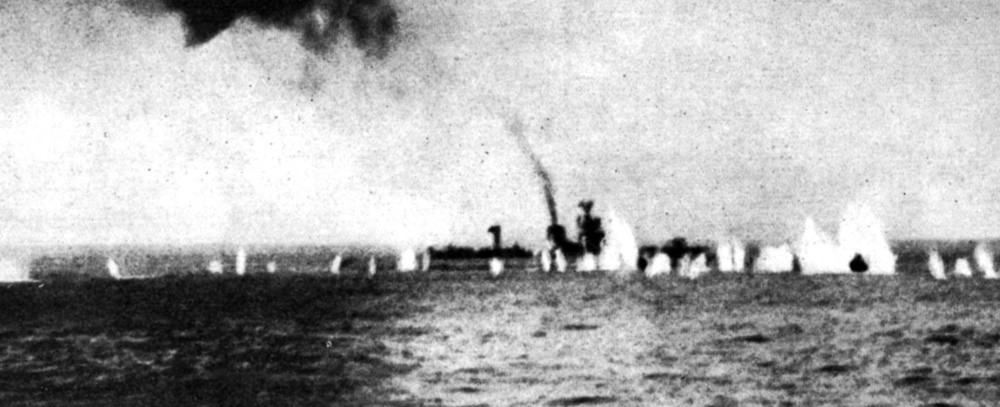
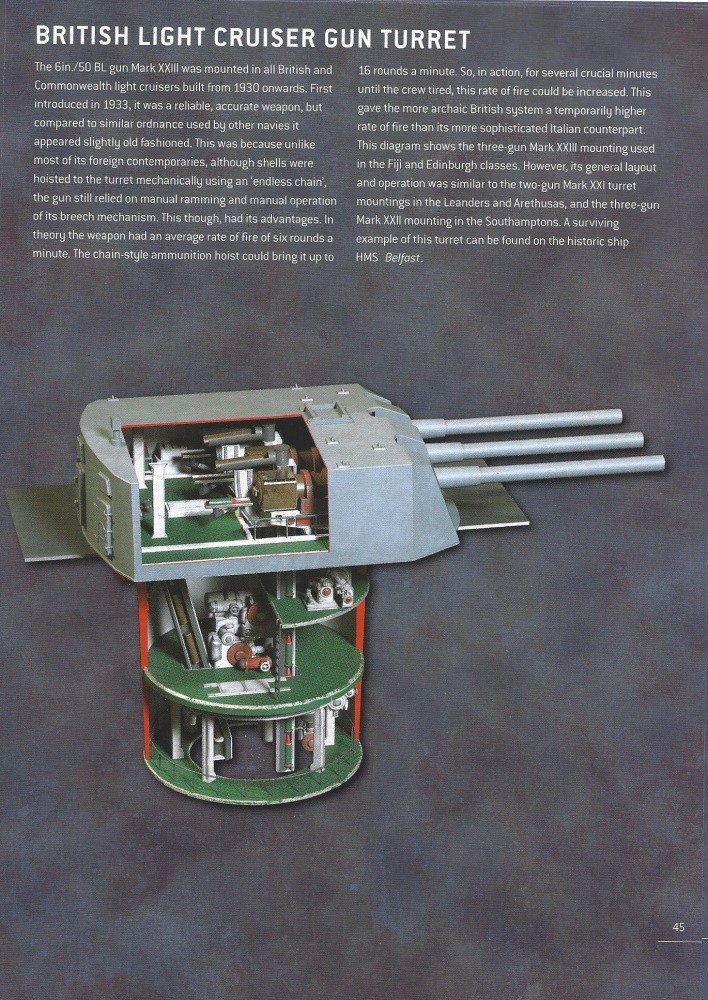
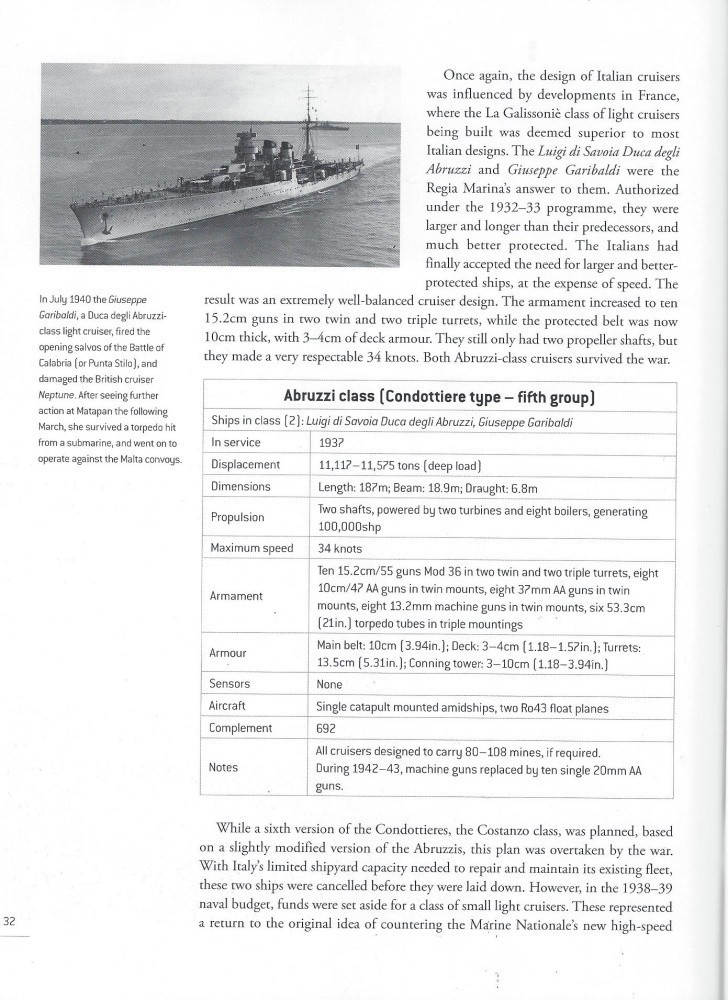
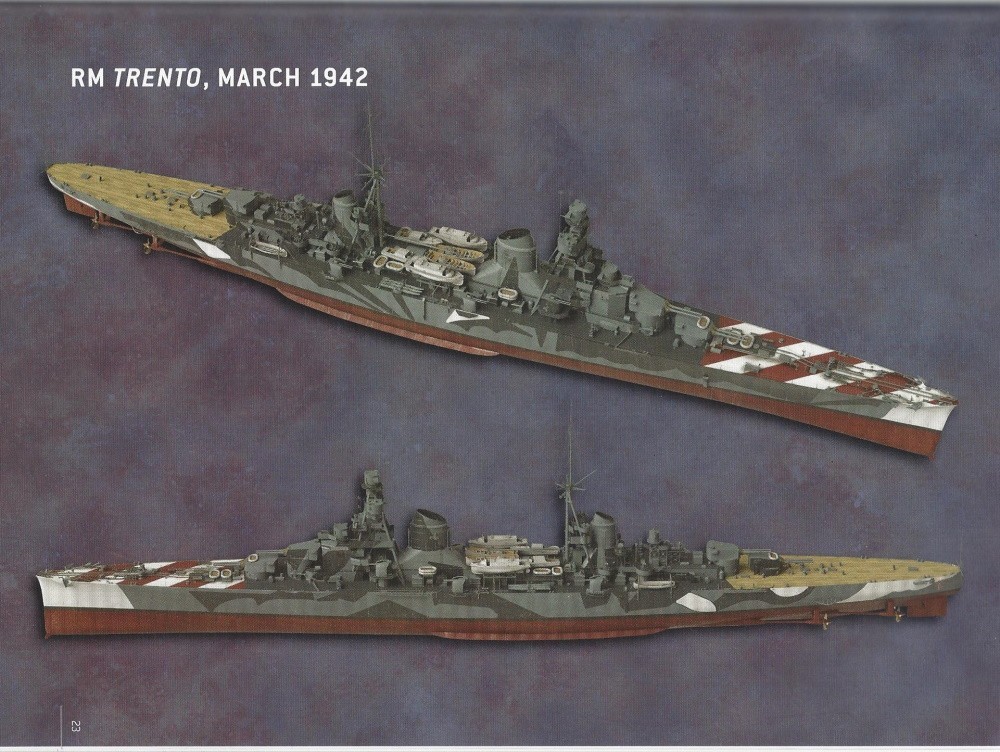
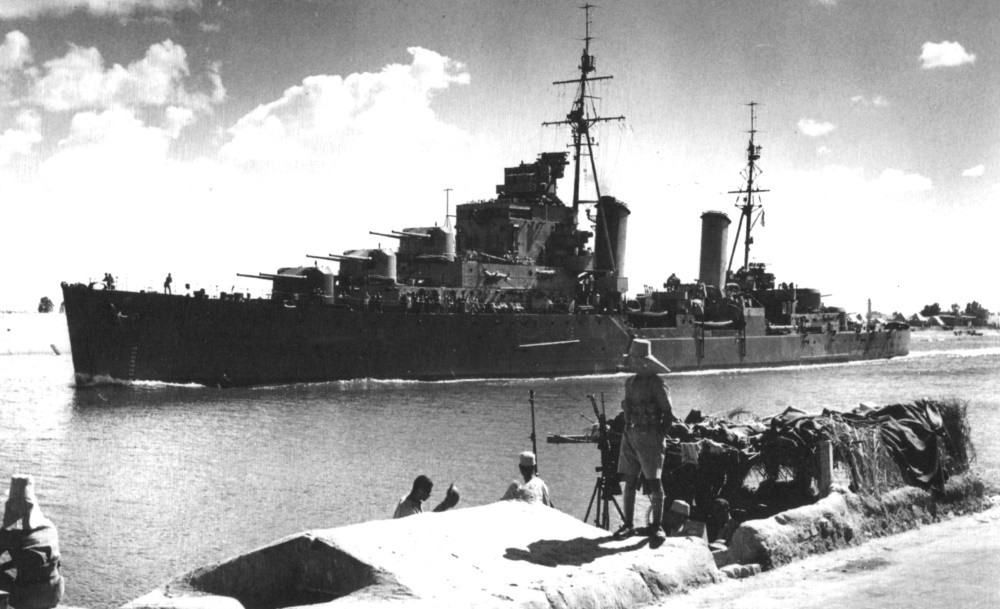
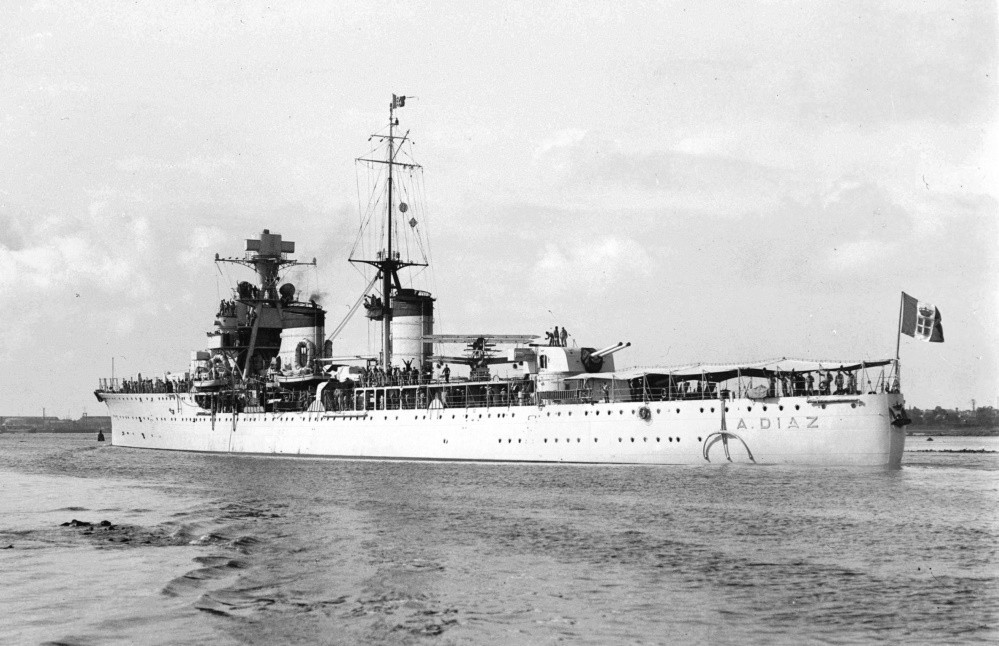
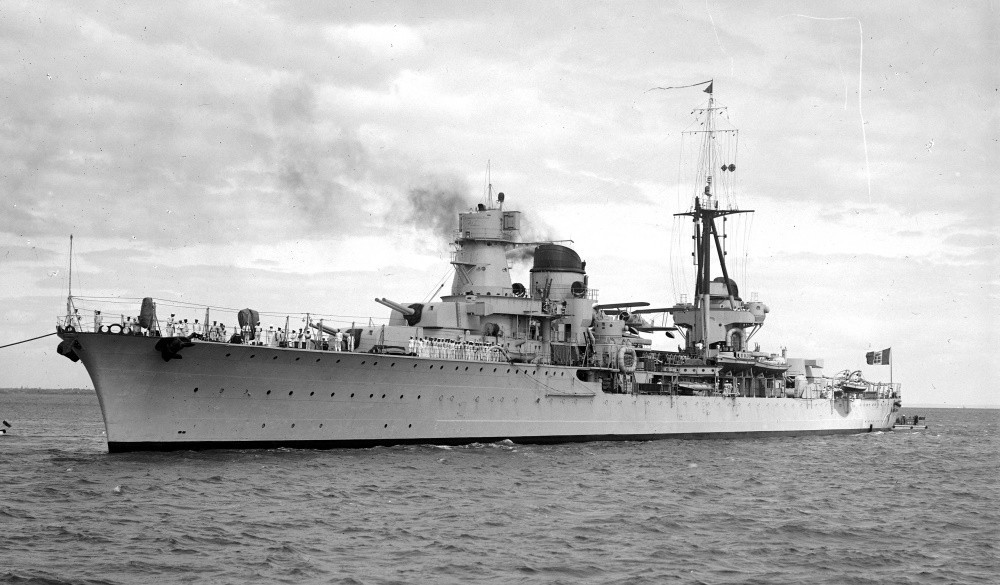

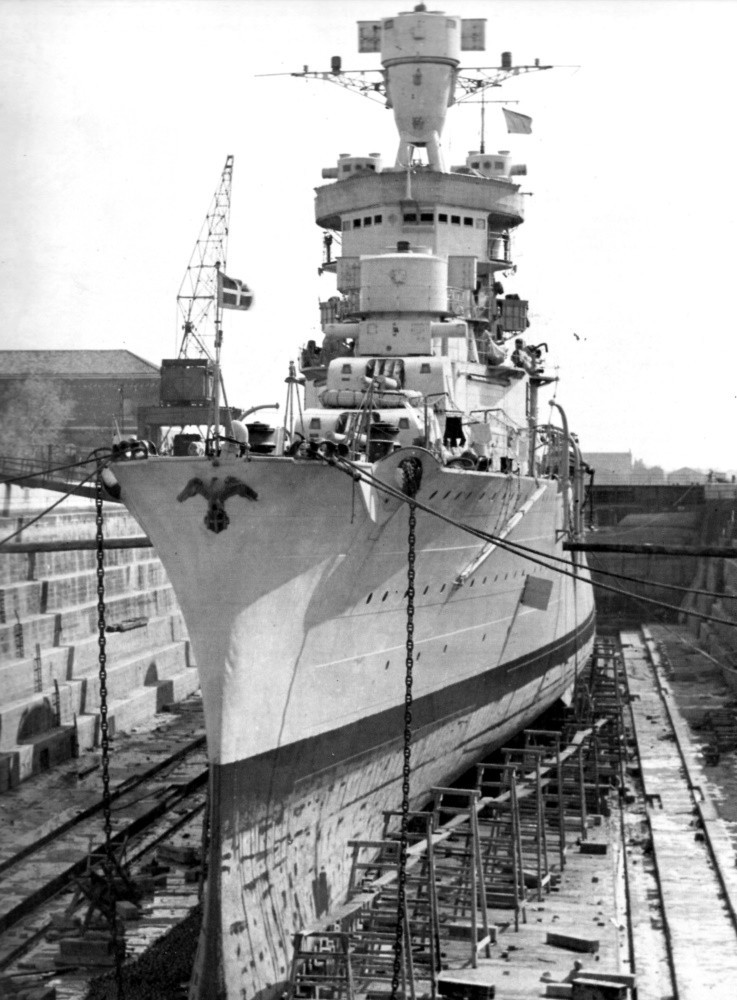
Conclusion
The cruiser role in the intensive Mediterranean naval war is recounted in British/Commonwealth Cruiser vs Italian Cruiser by Osprey. A large amount of strategic, tactical and technical information is presented in orderly and interesting chapters. I appreciate the overviews of the ships, the tactics and strategies they fought under, the descriptions of the weapons they fought with, and histories of the engagements. A desirable gallery of photographs is included and many with allow modelers good source material concerning these subject ships. Artwork and graphics distill pages of data and information into easily comprehensible presentations. The combats in the namesake chapter are not minute-by-minute reconstructions of the engagements but reveal how the cruisers fought.
Finishing this book provided me with an enhanced understanding of this aspect of the Mediterranean cruiser war and I recommend it to historians and modelers of the Mediterranean Theater of Operations, the Regia Marina and Royal Navy in general, and their cruisers in particular.
Please remember to mention to Osprey and retailer that you saw this book here – on Model Shipwrights.










